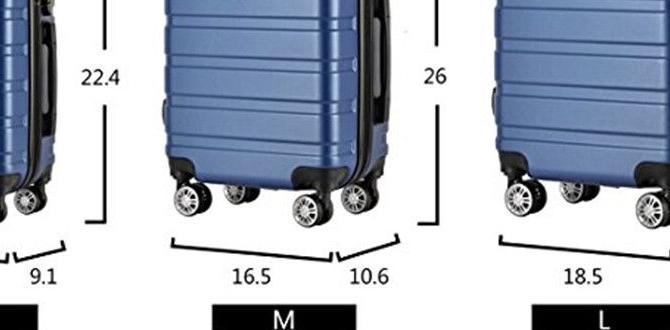Plan your perfect Appalachians road trip base with this guide! Discover essential planning steps, best routes, accommodation tips, and packing essentials. Travel with confidence and comfort, ensuring a memorable adventure through these majestic mountains.
Planning a road trip through the stunning Appalachian Mountains can feel like a dream, but getting there requires a bit of preparation. Don’t let the thought of logistics dim your excitement. With the right approach, you can transform those mountainous dreams into a smooth, enjoyable reality.
This guide is designed to break down the planning process into simple, manageable steps, ensuring your Appalachian adventure is comfortable and stress-free, no matter your travel style.
Your Appalachian Road Trip Base: The Ultimate Planning Guide
The Appalachian Mountains stretch over 1,500 miles from New England down to Georgia, offering an incredible diversity of landscapes, activities, and cultural experiences. To make the most of your journey, choosing a “base” or planning your route efficiently is key. This doesn’t necessarily mean a single resting spot, but rather understanding how to structure your trip to minimize travel time between sights and maximize enjoyment.
Why Base Planning Matters
Imagine driving for hours only to realize you’re far from the next attraction, or missing out on a hidden gem because your route wasn’t optimized. A well-planned base strategy helps you:
Save Time: Reduce backtracking and unnecessary driving.
Maximize Experience: Stay closer to the attractions most important to you.
Increase Comfort: Establish a rhythm with manageable travel days.
Control Budget: Better plan for accommodation and activities in specific areas.
Understanding Key Appalachian Regions
The Appalachians are vast. To plan effectively, it helps to think about distinct regions:
Northern Appalachians: Maine, New Hampshire, Vermont, New York, Pennsylvania. Known for lush forests, iconic peaks, and charming small towns.
Central Appalachians: West Virginia, Virginia, Kentucky, Maryland, Ohio. Home to dramatic ridgelines, deep valleys, and rich coal mining history.
Southern Appalachians: North Carolina, Tennessee, Georgia, South Carolina. Famous for the Great Smoky Mountains, Blue Ridge Parkway, and vibrant Southern culture.
Step 1: Define Your Appalachian Adventure Goals
Before diving into maps, ask yourself: What kind of trip do you envision?
Nature Lover: Are you focused on hiking, scenic overlooks, and national parks?
History Buff: Are you interested in Civil War sites, mining towns, or early American settlements?
Culture Seeker: Do you want to experience bluegrass music, local crafts, or regional cuisine?
Relaxation Focused: Are you seeking quiet mountain retreats and scenic drives?
Your interests will shape where you go, and therefore, where your “base” or main focus areas will be.
Step 2: Choose Your Starting Point and Duration
Where are you coming from? This will influence your entry point into the Appalachians. How much time do you have? A weekend trip will require a much different plan than a two-week exploration.
Step 3: Research Potential “Bases” or Key Destinations
Based on your goals and duration, identify 1-3 key areas where you might want to spend a few days. These will be your anchor points.
For Nature Lovers: Consider Gatlinburg, TN (near the Smokies), Asheville, NC (near the Blue Ridge Parkway), or Saranac Lake, NY (Adirondacks).
For History Buffs: Look into Harper’s Ferry, WV, Gettysburg, PA, or Abingdon, VA.
For Culture Seekers: Nashville, TN, or Roanoke, VA, can offer access to music and arts.
For Relaxation: Towns like Boone, NC, or Bedford, PA, offer tranquil settings.
Step 4: Map Your Route Between Bases
Once you have potential anchor points, it’s time to connect them.
Utilize Scenic Byways: The Blue Ridge Parkway is a prime example of a stunning scenic drive, but don’t forget other designated byways.
Consider Road Conditions: Mountain roads can be winding and slow. Factor this into your daily drive times. The Federal Highway Administration offers resources on highway conditions.
Don’t Over-Schedule: Allow for spontaneous stops and rest. Long driving days can be tiring.
Step 5: Book Accommodation
Your chosen bases will dictate your accommodation needs. Options include:
Hotels/Motels: Convenient and readily available in most towns.
Bed & Breakfasts (B&Bs): Often offer a more local and cozy experience.
Cabin Rentals: Ideal for longer stays or if you prefer more privacy and a kitchen. Many platforms like Airbnb and VRBO list these.
Camping/RV Parks: For the more adventurous and budget-conscious traveler.
Key Considerations for Accommodation:
Proximity to Activities: Is it easy to get to your desired hiking trails, attractions, or towns?
Amenities: Do you need a kitchen, laundry, or specific accessibility features?
Reviews: Always check recent reviews from other travelers.
Booking in Advance: Especially during peak seasons (fall foliage, summer), booking well ahead is crucial.
Step 6: Plan Your Activities and Day Trips
With your bases and route set, you can now fill in the details:
National and State Parks: Great Smoky Mountains National Park, Shenandoah National Park, New River Gorge National Park & Preserve (NPS.gov), and many others offer incredible hiking and scenery.
Attractions: Consider the Biltmore Estate in Asheville, NC, the Hatfield & McCoy Historic Sites in WV, or the historic towns like Jim Thorpe, PA.
Local Experiences: Look for farmers’ markets, craft shops, live music venues, and local eateries.
Step 7: Pack Smart for Comfort and Convenience
Mountain weather can be unpredictable. Layers are your best friend.
Essential Packing List:
Clothing:
Moisture-wicking base layers
Insulating mid-layers (fleece, down jacket)
Waterproof and windproof outer shell
Comfortable hiking pants or convertible pants
Sturdy, broken-in hiking boots or trail shoes
Casual clothing for evenings
Socks (wool or synthetic blend)
Gear:
Backpack or daypack for hikes
Reusable water bottle
Sunscreen, hat, sunglasses
Insect repellent
First-aid kit
Navigation tools (maps, GPS device, or reliable navigation app like AllTrails)
Personal Care:
For Stress-Free Travel: Don’t forget essentials that ensure comfort and security. For adults who may need extra protection, carrying discreet, comfortable options like adult diapers can provide peace of mind, especially on long drives or during active days. Similarly, parents traveling with little ones should ensure they have an adequate supply of child diapers and related supplies readily accessible. Having these items packed means you can focus on enjoying the journey without worry.
Personal medications
Toiletries
Step 8: Prepare Your Vehicle
Your vehicle is your primary mode of transport. Ensure it’s in top condition.
Tire Check: Look for wear and ensure proper inflation.
Fluid Levels: Check oil, coolant, brake fluid, and windshield washer fluid.
Brakes: Get them inspected if you have any doubts.
Emergency Kit: Include jumper cables, a flashlight, basic tools, and a first-aid kit.
Sample Appalachian Road Trip Itinerary Framework (7-Day Example)
This is a flexible example focused on the Southern Appalachians, illustrating the “base” concept.
Theme: Blue Ridge Mountains & Great Smoky Mountains Explorer
| Day | Focus Area/Base | Key Activities & Destinations | Notes |
| :– | :————– | :—————————- | :—- |
| 1 | Asheville Area, NC | Arrive, settle into accommodation. Explore downtown Asheville, Biltmore Estate (optional). | Base 1: Asheville area. |
| 2 | Blue Ridge Parkway (North) | Drive scenic sections of the Parkway. Stops: Craggy Gardens, Mount Pisgah. | Enjoy overlooks, short hikes. |
| 3 | Blue Ridge Parkway (South) / Boone, NC | Continue south on Parkway. Stops: Linn Cove Viaduct, Grandfather Mountain. Explore Boone. | Base 2: Boone area (or stay in Asheville and do a day trip). |
| 4 | Travel to Gatlinburg/Pigeon Forge, TN | Scenic drive to the Great Smoky Mountains gateway town. Settle in. | Approx. 3-4 hour drive. |
| 5 | Great Smoky Mountains National Park | Drive Cades Cove Loop Road (check for traffic), hike to Laurel Falls, visit Sugarlands Visitor Center. | Base 3: Gatlinburg/Pigeon Forge. |
| 6 | Great Smoky Mountains National Park | Hike in the park (Chimney Tops, Alum Cave Trail). Explore Gatlinburg or Pigeon Forge. | Consider a scenic tramway ride. |
| 7 | Departure | Enjoy a final mountain breakfast. Depart from gateway airport or drive homeward. | |
This framework shows how you can establish a few “bases” to explore a region thoroughly without constantly changing hotels. You might spend 2-3 nights in Asheville, then 2-3 nights near the Smokies.
Planning for Unexpected Needs: Comfort on the Go
Travel is wonderful, but it’s wise to be prepared for life’s little interruptions. For those who manage incontinence, whether it’s for yourself or a child, planning ahead is crucial for maintaining comfort and dignity.
Comfort Considerations:
Adult Diapers/Briefs: For longer car rides, unplanned delays, or situations where restroom access is uncertain, reliable adult incontinence products offer security. Look for options that are discreet, absorbent, and comfortable for extended wear. Many brands offer overnight protection, which can be a lifesaver when you’re relying on motel stays or camping.
Child Diapers & Supplies: Similarly, parents know the importance of having ample diapers, wipes, and changing pads. Keeping a dedicated travel bag with these essentials within easy reach in the car makes roadside stops much smoother.
* Discreet Disposal Bags: Small, odor-controlling bags are invaluable for discreetly disposing of used products on the go, ensuring your vehicle remains fresh.
By proactively including these personal care items in your packing list, you remove a potential source of stress, allowing you to fully immerse yourself in the beauty of the Appalachians.
Conclusion
Your Appalachian road trip is more than just a journey from point A to point B; it’s an immersion into a landscape rich with natural beauty and history. By setting a clear plan, choosing your bases wisely, and packing with care for both adventure and comfort, you’re setting yourself up for an unforgettable experience.
Remember to be flexible. Sometimes the best discoveries happen when you take a detour or linger longer at a place that captures your heart. Whether you’re chasing waterfalls, exploring mountain towns, or simply enjoying the drive, the Appalachians offer a rewarding adventure for every traveler. So, pack your bags, fuel your car, and get ready to explore!
Frequently Asked Questions
Q1: What is the best time of year to visit the Appalachians?
A1: Spring (April-May) offers blooming wildflowers and fewer crowds. Summer (June-August) is great for hiking but can be hot and humid. Fall (September-October) is spectacular for foliage but is very popular; book accommodations well in advance. Winter (November-March) offers solitude and a different kind of beauty, but some park roads and trails may be closed due to snow.
Q2: How much driving should I plan for each day?
A2: It’s best to limit driving to 3-5 hours per day, especially on winding mountain roads. This allows for stops, enjoying scenery, and avoiding fatigue. Consider the terrain; driving through the mountains is slower than on a highway.
Q3: What kind of vehicle is best for an Appalachian road trip?
A3: A reliable vehicle with good ground clearance is recommended, especially if you plan to explore unpaved park roads or forestry service roads (always check specific advisories). For most paved scenic routes like the Blue Ridge Parkway, a standard car is perfectly fine if it’s in good condition. An SUV or crossover offers a bit more comfort and capability for varied terrain.
Q4: Are national parks in the Appalachians expensive to visit?
A4: Many national parks have an entrance fee per vehicle, which is usually valid for 7 days. The fee is generally reasonable and contributes to park preservation. If you plan to visit multiple national parks within a year, consider purchasing an America the Beautiful Pass.
Q5: What if I’m traveling solo? Is it safe to road trip in the Appalachians?
A5: The Appalachian region is generally safe for solo travelers. However, as with any travel, it’s wise to exercise caution. Share your itinerary with a trusted friend or family member, be aware of your surroundings, stick to marked trails when hiking, and inform your accommodation provider if you’ll be arriving late.
Q6: How can I ensure I have easy access to amenities like restrooms and food while driving scenic routes?
A6: Plan your stops around visitor centers, designated overlooks with facilities, and small towns along the route. Download offline maps of your route, as cell service can be spotty in mountainous areas. Pack snacks and water to stay comfortable between planned stops.
Q7: I need to manage incontinence during my trip. What are the best ways to pack and manage this discreetly?
A7: Pack more products than you think you’ll need. Store them in their original packaging within your luggage. Use a separate, easily accessible bag for immediate use items (e.g., a small pouch with a couple of products, wipes, and disposal bags) in your daypack or car. Many modern products are very discreet and comfortable. Planning for disposal in advance (small trash bags) will also help maintain freshness and cleanliness.






